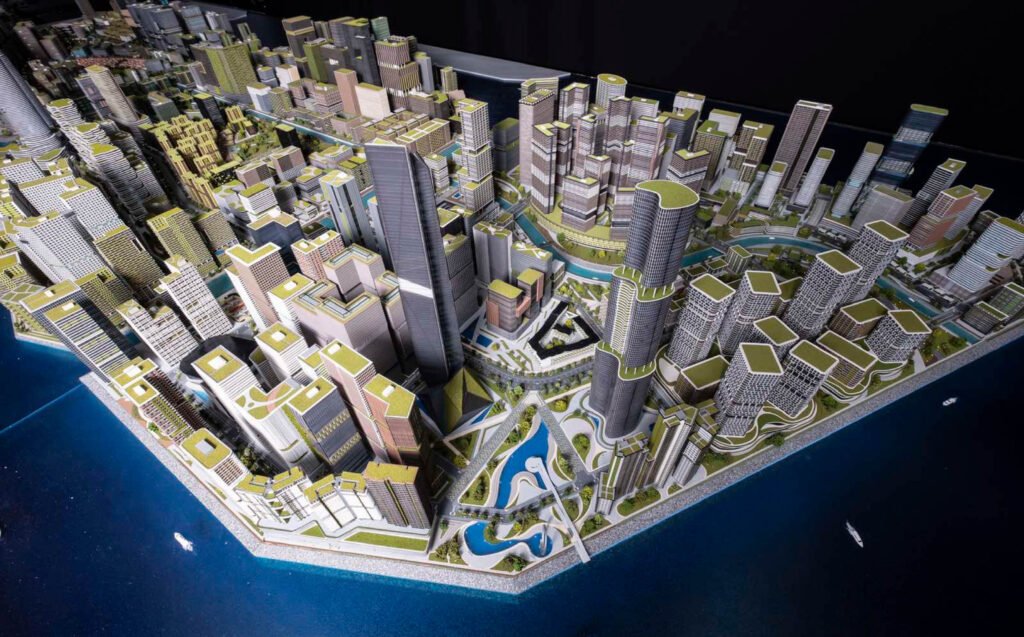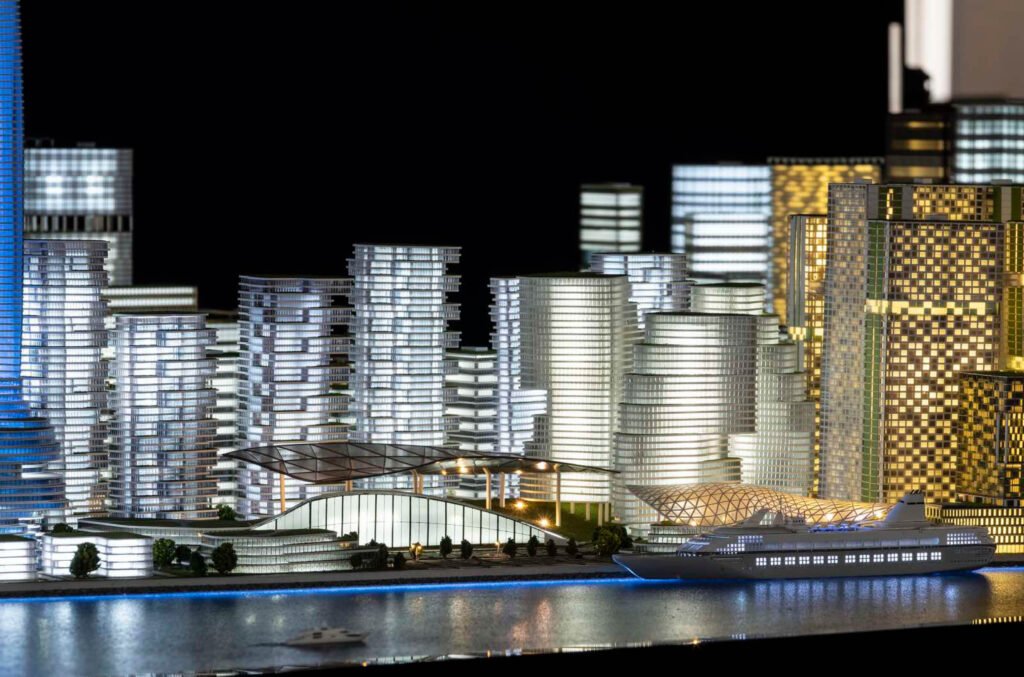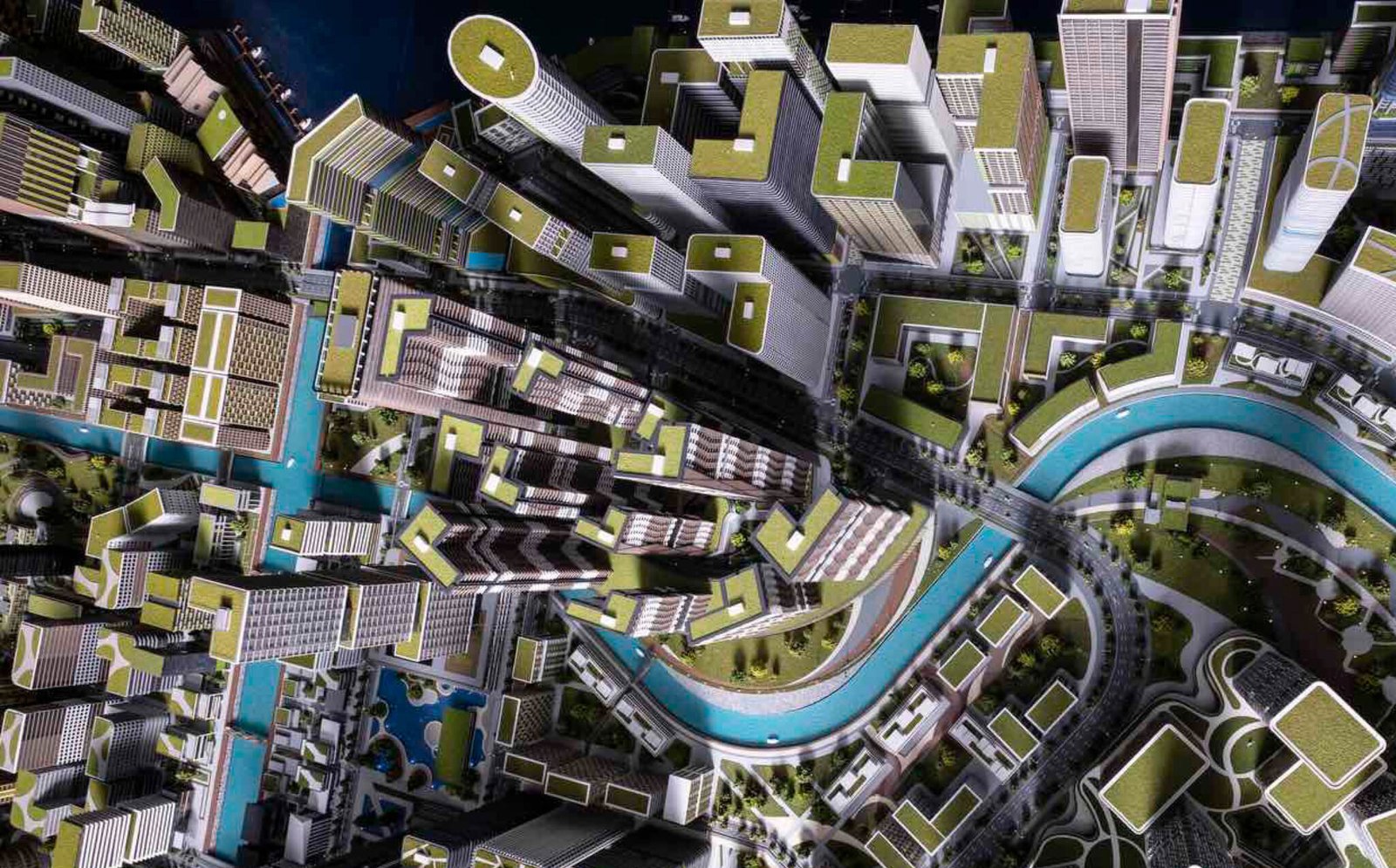Interview Judith Torres
Images World Architecture Festival and WTA Architecture + Design




It is 2:16 in the morning in Manila, 6:16 in the evening in London. My editor messages me in all-caps: WILLIAM TI WON OVERALL WAFX. At 2:22, he rings (I made him promise to call) but I am dead to the world. William Ti is awake, tending to his bonsai. The guy is an insomniac. He isn’t paying attention to the World Architecture Festival’s final program of the day because both his projects had already lost in their categories.
Then at 2:30 AM, a lone beep from William’s phone.
“Congrats! 😍” it says. For what? He wonders, a bit confused.
“What’s up?” he messages back. The friend forwards a tweet:


“Woooooooooh!!! I didn’t know!! Haha.” William calls his girlfriend in London, who isn’t paying WAF any mind, either. Excited by the news, she messages friends in Manila. But everyone except Andy Locsin, it seems, is asleep. “Congrats Will! A great win… two thumbs up!” messages Andy, who served as one of William’s mock jurors at the practice crits Kanto and GROHE organized for this year’s finalists.
Fortunately, Kanto is ready. The day before, my editor Patrick Kasingsing and I had prepared an article, Horizon Manila is WAFX Project of the Year, complete with excerpts of his winning WAFX presentation. So, oblivious as I and most of the Philippines architectural community was to the historic news, all Patrick had to do was click “publish” and our work for our coverage was done.
No, wait, we’re not done until the WAF major prize winner sings, of course!


Congratulations, William! I am just so in awe of how persevering you are. This is the fourth WAF you have joined, and Horizon Manila is your seventh shortlisted project. I am so happy you have been rewarded this year! Did you not have any inkling at all?
No, talaga! I didn’t even know the WAFX was out yet. I wasn’t watching because we knew that we lost the categories already. So I wasn’t really paying attention anymore.
But your panel with Peter Finch, Jeremy Melvin, and Jonathan Rose went well.
The discussion was awesome. We had an hour to talk, so it was substantial. Well, the hard part about reclamation is the justification for it, right? I think they got the idea that, okay, it’s population density that is the rationale for it, among all the other problems Manila has.
Which of their comments did you appreciate most?
When they started to ask about how we can actually build a community. And then the idea of how much impact it’s going to have on Metro Manila. I think they really bought into that. And I really do think this project will have a really big impact on Metro Manila.
They didn’t have a problem with reclamation because there are great examples of it around the world, Singapore and Amsterdam they mentioned several times.
They assume that when someone proposes reclamation, it’s going to be done responsibly. So, while there were a couple of questions from the audience about ecological impact and safety, you didn’t get bogged down debating the evils and lesser evils of reclamation.
Right. The edge of Manila Bay is already reclaimed land. Through the years as we reclaimed more and more land, it’s become a hard edge. And if you look at the water, it’s brown water. There are no fisheries or mangroves in the area. And that is what we will reintroduce. Also, the ecological impact is greatly minimized because we’re just basically taking sand from one part of the bay to another part.
There were two things they found most compelling. First, that Manila has an undeniable water legacy, which you quoted Daniel Burnham on, and which Jeremy Melvin, WAF’s curator, quoted back to you.
Water is part of our identity. The idea is to reintroduce water into people’s daily lives and provide a greater number of people access to these waterways. And that’s more important, really, than even making beautiful communities along the water, but about letting people actually get to the waterfront.
Second, your strategy to grow Manileño resonates with our culture and political make-up. Your proposal to nurture 28 districts or barangays really fascinated them. You mentioned they would have different densities and vectors of growth, different attractions (not just all malls), right.
Yes. each barangay is mixed-use. Each of the 28 has its own distinct housing typologies, ranging from villas to apartments and condominiums, even dormitories. And what we’re proud of is this affordable public housing district planned to house about 10,000 families—about ten percent of Manila’s informal settlers. So, it’s ten percent of our housing problem.
Housing needs a robust and vibrant local bubble to support it, so we use public space as something that reinforces this. What Horizon does is it actually increases available park space to every Manileño by 50 percent. It provides green sites, it provides space for people to breathe and grow. And yet, open space itself does not provide a complete urban lifestyle, right. We need to provide points of interest. And it’s these different points of interest that allow you to enjoy living in a city.
I think the lessons from a city like ours and Tokyo is that a megacity cannot be planned in command-and-control mode anymore. They’re too big and unwieldy for top-down planning. It has to be more like growing something organically, more like an ecosystem than a blueprint.
Though you would still need some development control, otherwise, it could be chaotic like Metro Manila, whose cities can’t get their act together.
A polycentric city is actually good, Judith. It’s just that, of course, the interconnectivity between each center is the question, right. So, Metro Manila being polycentric is not bad; it being fragmented in governance is the culprit behind the chaos. Kind of like the US now during the pandemic, right, each state with their conflicting policies, fending for themselves.
This idea of the 28 barangays, each with unique experiences and building typologies rather than a uniform gesture throughout, was it inspired by principles you learned in your master’s in urban planning at NUS?
Honestly, it’s because I grew up in Tondo. Haha! I still remember my barangay, Barangay 244. The barangay revolved around playing basketball in the street. And that brought us together, people from different walks of life, right. I think it shows how a community grows around a shared experience. And that’s something our architecture has always been looking to and addressing, like the Book Stop (WTA’s shortlisted project at WAF 2016)—the hyperlocal stuff. And that, I think, could be our contribution to the global conversation on architecture. I feel it’s something we can expand on, what with the entire Philippines being made of barangays, right?
Yeah. The Pinoy’s propensity to identify with his tribe rather than the Philippines as a nation is seen as a weakness but you’re putting it out there as a strength.
Well, if you look at how we responded during the pandemic, right, everything was coursed through the barangay. Because it’s the frontline. There are lessons from the barangays that are useful for developing neighborhoods.
I am very heartened by the different residential typologies. Affordable housing for 10,000 families ensures a mixed-income development, which private developers don’t embrace—they all want to be “exclusive.” So people can’t afford to live in their developments and we’re stuck with the same old problem of workers commuting from far-away bedroom communities to the office buildings in the fancy new CBDs.
Jeremy Melvin, WAF’s curator, was so enthused by your ideas, he asked Jonathan Rose whether the strategies might be applied elsewhere.
But I think the most fantastic feat, William, would be implementing your ideas. How will you safeguard against cutting corners? Who’s your advocate?
Well, we’ve been working very closely with the developer. And the more positive reactions you get, the more encouraged the developer is to follow the plan, right. That’s really my interest in this and why I’ve put the concept and the plans out there.
William, what are the non-negotiables for you where Horizon Manila’s implementation is concerned?
I want the canal park in with the water retention program, I want the mangroves, I want the public waterfront and the loop in the tram system. Just those systems in place and I’m sure it’s a better city already. Of course, the parks and certain public buildings. That’s it. Those things will change how we look at our city. If I can get those things in, I’ll happily retire.
What impact do you hope this WAFX win will have?
Manileños get to be who we are. People of the river, people who came from the sea. It kind of says that we shouldn’t change who we are to fit modern society. I’m not saying we should all live in vernacular nipa huts, right. I’m saying how we live as a people is significant—how we have our own neighborhoods, how our barangays shape us, how we like to have spaces where we can actually congregate. Have you seen Barcelona with eateries in the middle of the street? That is a physical representation of tambayan on the street, right. I think we need to seek out the things that make us Filipino—not the materials we build with, but how we live and how we structure our neighborhoods that are distinctly Filipino. That’s something to explore further.
How many of you and how long did you work on this, William?
A good 15, maybe 20 people for six to eight months.
How frequently did you meet and discuss?
Everyday! In all honesty, because of the pandemic, I had time to focus on this. If it were not for the pandemic, I would not have spent so much time trying to figure it out. Like, we really like sat down and talked things over and researched. Okay, this is how we can do it. Or this is how it’s done. But then maybe it can be done a different way. And okay, if we do it this way, is it better? Yes. Why don’t people do it? Because they can’t be bothered. Because they’re not paid enough. They don’t have the time to think of all the details.
The usual masterplan does not include detailed stuff. It’s always zoning, major highways, a golf course… throw in the big gestures. Imagine if you had to fill 400 hectares? The easiest way to fill up a 440-hectare development is by inserting big chunks. No one wants to comb through a plan with a fine-tooth comb and figure out what happens at smaller scales.
But that’s what guarantees life and vibrancy.
And that’s how it should be done. Because if you want to do something new, then you’re researching and trying to figure out a new way of doing things, which takes so much more time. If you’re doing it the way you know how to do it, just doing the same thing as before, you can fast-track the plan. But to do something different, you have to figure things out, it’s like coming up with your own formula.


Will you still join WAF now that you’ve won a major prize?
We know what we’re entering next year. It’ll be the same as this year, one that everyone’s gonna love, one that everyone’s gonna hate.
People don’t hate your ideas, William. It’s fear and a lack of trust in government and big business, especially because of the magnitude of the project.
Well, this new project is a big one. It isn’t by the water, so there probably won’t be as much pushback.
How about some words of encouragement to young Filipino architects who’ve got a vision of a better world?
We’re talking about a human environment that we’re trying to make for each and every one of us. And that’s why architecture is our passion. Because what we do actually manages to move the needle forward. We’re not just saying, “We have a beautiful city want to preserve.” We’re saying, “We want to build a better city.” That’s really significant because each and every architect, you know, will change this city. The more we plan for positive social impact, the faster that change will come.
And what is the relevance of WAF to all of this?
It proves that Filipino architects are good, that we know what we’re doing, and can contribute to the global conversation on architecture. We have this tendency to fear, to be insular. We say, “Why are we doing modern architecture from the West?” But it’s a global dialogue, we live in a global village. If we have contributions to offer to the pot, then there is no shame in taking from it.
That’s what we need to do, put in our own contributions, add flavor, and eat from the same dish. So that’s really why WAF and all these global platforms are valuable. They allow us to say, “We exist! Hey, we’re doing good things and you can borrow from us as much as we can borrow from you guys.”
That’s our hope, you know, because there’s only so much you can build yourself. Like now, I’m not really looking at projects I can do as an architect (the firm has some 40 projects ongoing). More like, what ideas can we come up with and delve deeper into, and hopefully others can take off from those ideas. Because we can only build so much ourselves and it’s how many others we influence that matters. That’s what I think. •


Thanks to GROHE Philippines for sponsoring the practice crits that Kanto organized for Filipino WAF finalists. Your support is building a community of architects and designers who believe in life-long learning and critical thinking. Excerpts of the practice crits will soon be available for viewing in GROHE Pacific’s Facebook page.


2 Responses